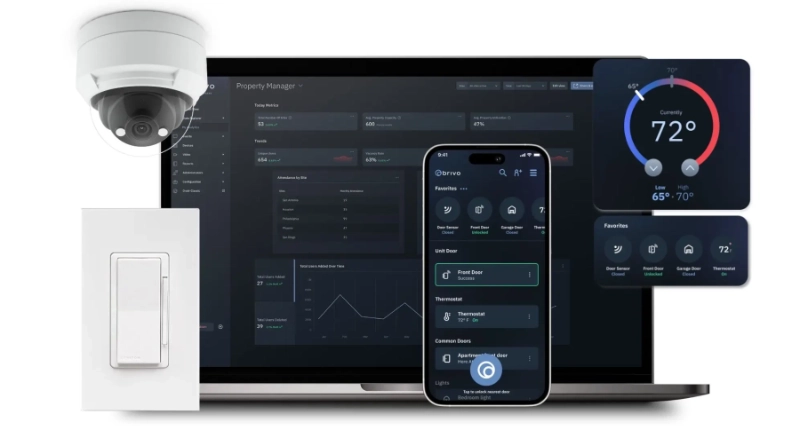Where the Physical and Digital Worlds Collide
A recent Propmodo and Rise Buildings article, Top Three Things You Need to Know About Your Occupants, discusses three main functions of access control technology and its importance in the post pandemic landscape.
Connected buildings continue to evolve through new proptech. It is not just having the technology, however, how you use it is what matters. You can use proptech to make buildings safer, create convenient user experiences, and bring people together. The physical building becomes an information source for you and an interactive environment for your tenants. All of this impacts your bottom line and brand reputation.
Safe Buildings
When the COVID-19 pandemic swept across the world there was a scramble to understand how to keep people safe and healthy. Lockdowns went into effect with little or no time for preparation.
This was a watershed moment for many professionals in charge of security. Those who had access control data were able to understand who was in the building, where they were in the building, when they were there and how many people were there total. Entire buildings could be locked down or only certain areas could be off limits. Access control technology and data was able to serve as an immediate protective measure to ensure social distancing and also to monitor empty buildings and capture any suspicious or unauthorized activity.
In another recent Propmodo article, Building a Digital Moat for Your Office Through IoT and Access Control, Steve Van Till, President and CEO of Brivo said, “Automating health protocols with mobile apps is one of the primary ways to create this data efficiency. Occupancy data on a dashboard gives a real-time view into usage and how close it may be to limits. It also throws off long-term value that can feed into future leasing decisions.”
As people begin returning to the office, access control data is now useful to understand overall traffic flow and how many people are using a space. This information is critical in the process of evaluating what kind of office space will be needed moving forward.
Convenient Buildings
The convenience factor of integrated proptech extends to facility professionals and tenants.
“There is a lot of technology infrastructure that goes into real estate. Everyone has their own needs and requests and today’s systems are very disconnected,” said Prasan Kale, CEO of Rise Buildings. “These systems need to be connected so facilities management teams aren’t burdened with manually making them interoperable and can focus on their day jobs.”
Consider all the goings-on in a portfolio of properties. Package delivery (up nearly 23% from 2019), commercial office usage, amenity usage, repairs and maintenance, etc. For convenience to be achieved, there has to be an easy way for professionals to manage all these activities and for tenants to partake easily as well.
“Now I’m seeing portfolio managers looking for the ability to have a federated system across all of their properties. That creates a more fluid experience for people that work in one building but want to use space in another. For mid-market portfolios, it’s an interesting strategy to punch above their weight and compete with larger organizations while creating a new revenue stream,” said Steve Van Till.
Interactive Buildings
The goal for connected buildings is to create an interactive and convenient environment that keeps occupants coming back and attracts new tenants.
In the Propmodo article, Kale explains, “Occupants need technology to access building functions for a multitude of reasons, but the key to getting people on a building’s platform is to start with priority, functional elements. Content needs to be relevant to within blocks of where their building is. The app needs to give them access to curated, relevant information that they would otherwise have to spend time searching for – if they chose to do so at all.”
For those in charge of the property, integrated proptech provides critical data about the building as well as comprehensive control of those buildings. It also provides data on tenant behavior. With the proptech available today, buildings become datamines that can inform developers and facility professionals about their next business moves and what immediate action is needed for occupants safety and enjoyment.
IoT and smart building infrastructure have and will continue to change the human and building relationship. A building is no longer four walls and a roof. It is now a smart entity to learn from and to interact with.













